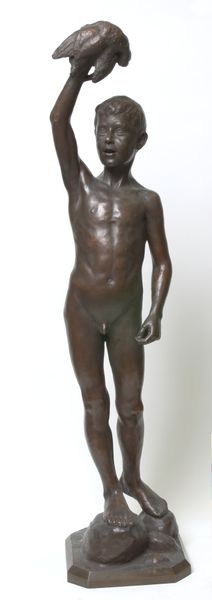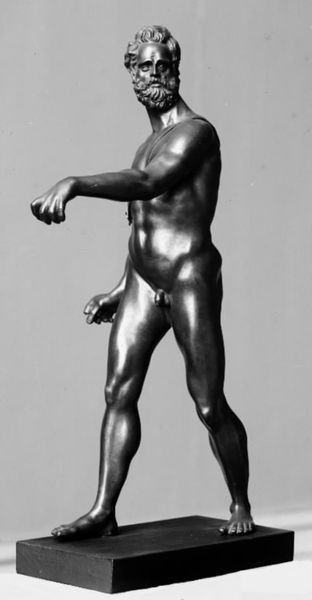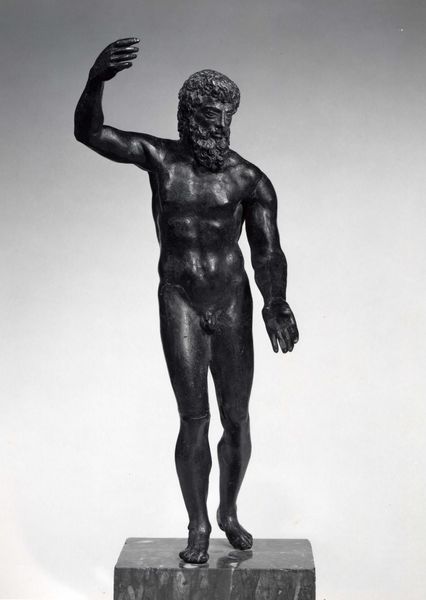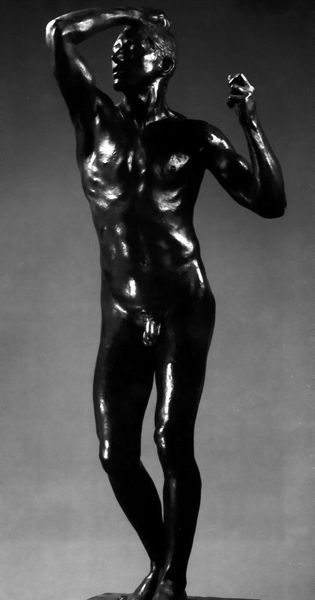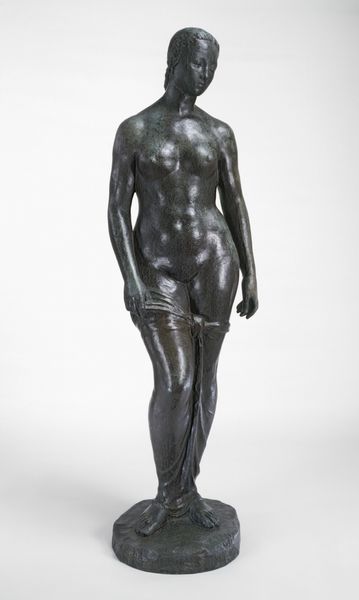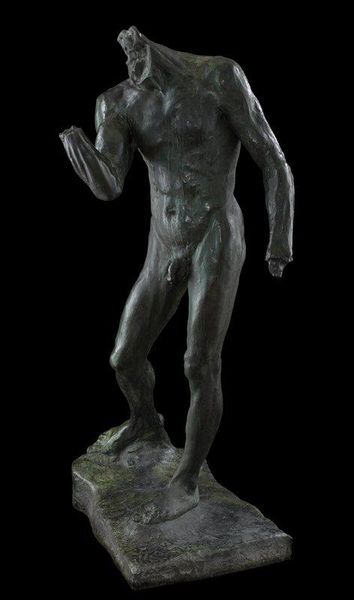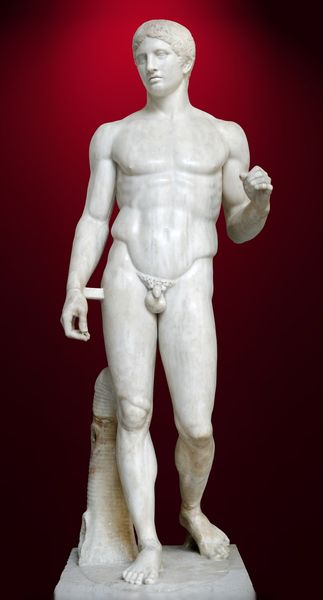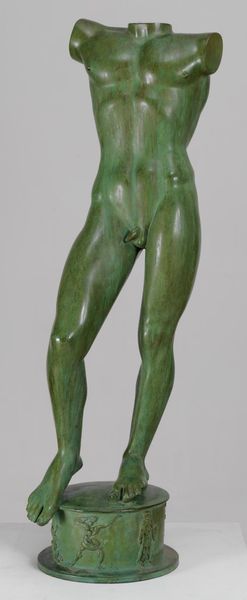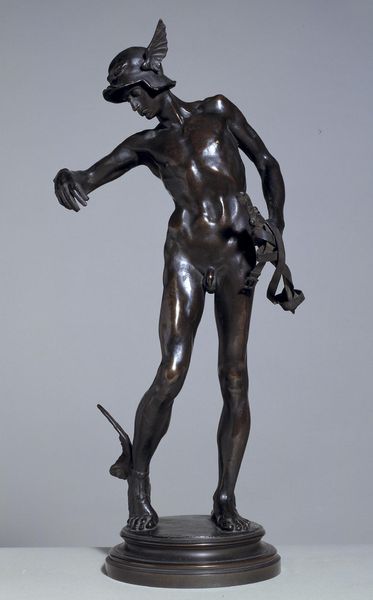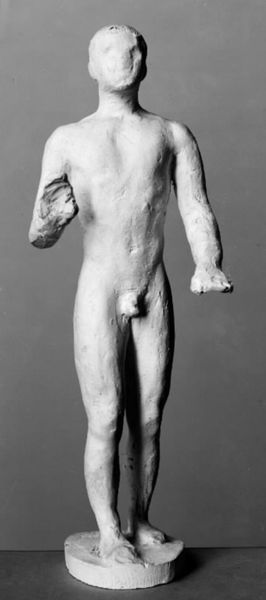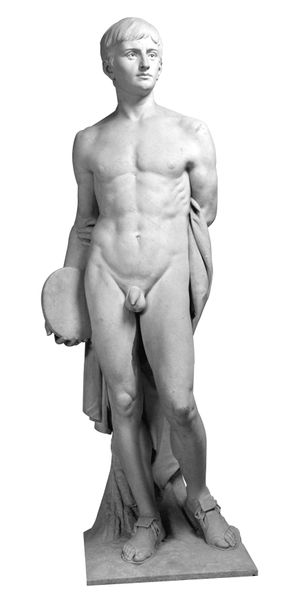
bronze, impasto, sculpture
#
sculpture
#
bronze
#
figuration
#
impasto
#
sculpture
#
history-painting
#
academic-art
#
nude
#
realism
Dimensions: 71 x 28 x 20 in. (180.34 x 71.12 x 50.8 cm)
Copyright: No Copyright - United States
Curator: Standing before us is Auguste Rodin's "The Age of Bronze," created around 1876 and 1877. A celebrated bronze sculpture, now residing at the Minneapolis Institute of Art, it captures the essence of the male nude in a remarkably realistic manner. Editor: Immediately, I'm struck by the figure's pose—an ambiguous mix of vulnerability and a kind of awakening. There's a palpable tension in the set of his body, almost like a question hanging in the air. Curator: That sense of ambiguity was actually quite controversial in its time. The sculpture's realism was so striking that Rodin was accused of making a cast directly from a living model. A claim he vehemently denied, stating his commitment to capturing raw emotion, with every nerve on the surface. The scandal only boosted his notoriety! Editor: I see that intense realism—the detailed musculature, the slight asymmetry— it feels like an attempt to represent a modern, rather than idealized, body. It pushes against established classical ideals while remaining committed to figuration, showing the emergence of someone free of constraints. Was the nude a provocative medium in those days? Curator: Absolutely. Nudity in art was usually confined to historical, mythological, or allegorical subjects, safely distanced from the present day. Rodin placing an unidealized male nude, in a life size format, as something meant to stand on its own, well...it challenged prevailing academic conventions and certainly raised some eyebrows. Editor: Considering that the figure was first entitled 'The Vanquished One', his raised arm seems like it’s questioning the role of man – almost like he is reevaluating after an historical trauma. How do we read this shift towards psychological narratives during his Age? Curator: By removing that spear in his hand, Rodin shifted focus. No longer portraying a vanquished soldier, instead, the title and posture open an entry to understanding universal experience, the emergence of consciousness itself. You have to remember that scientific advances and socio-political shifts contributed to changing perceptions of man’s place in the world. Editor: It speaks to broader shifts in how the human experience itself was being conceptualized at the time, this liminal state… What lingers most for me is the figure’s introspective stance, offering a moment for us to ponder the continuous unfolding of our own potential and the complex burden of existing. Curator: I think the controversy it stirred highlights just how pivotal Rodin was in redefining sculptural traditions, pushing beyond established boundaries in art institutions. He sought not to replicate but to truly represent humanity with all its complexities.
Comments
Join the conversation
Join millions of artists and users on Artera today and experience the ultimate creative platform.

